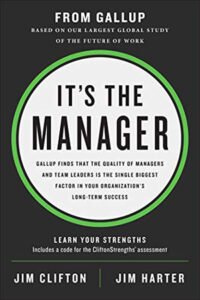|
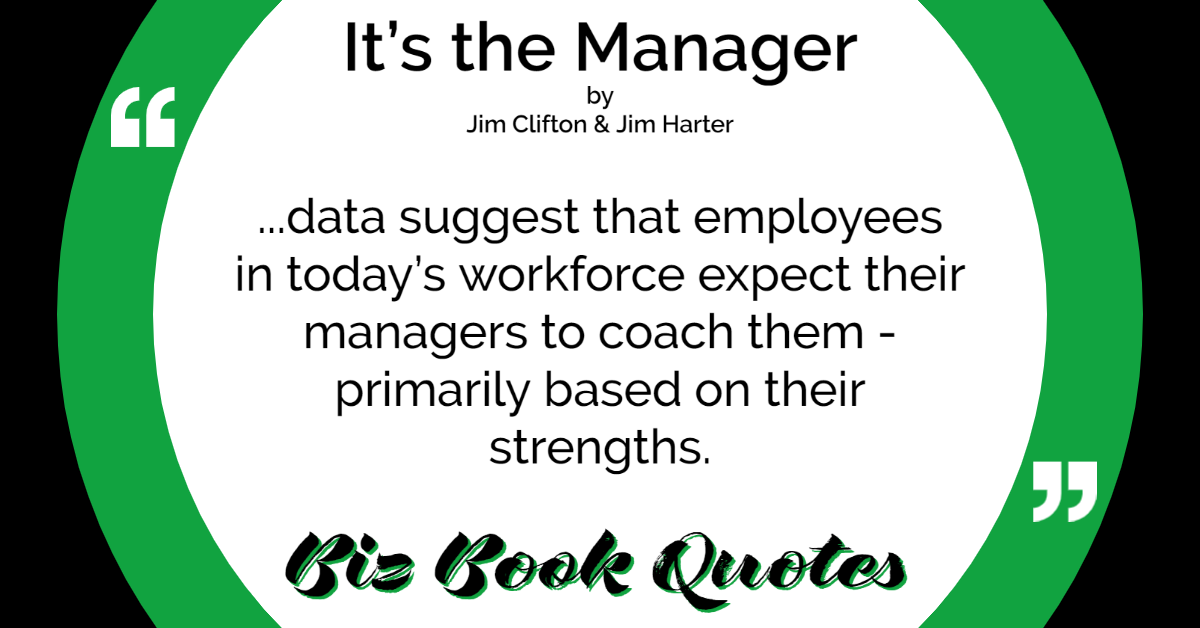
|
It’s the Manager:
…data suggest that employees in today’s workforce expect their managers to coach them – primarily based on their strengths.
|
56 |
|
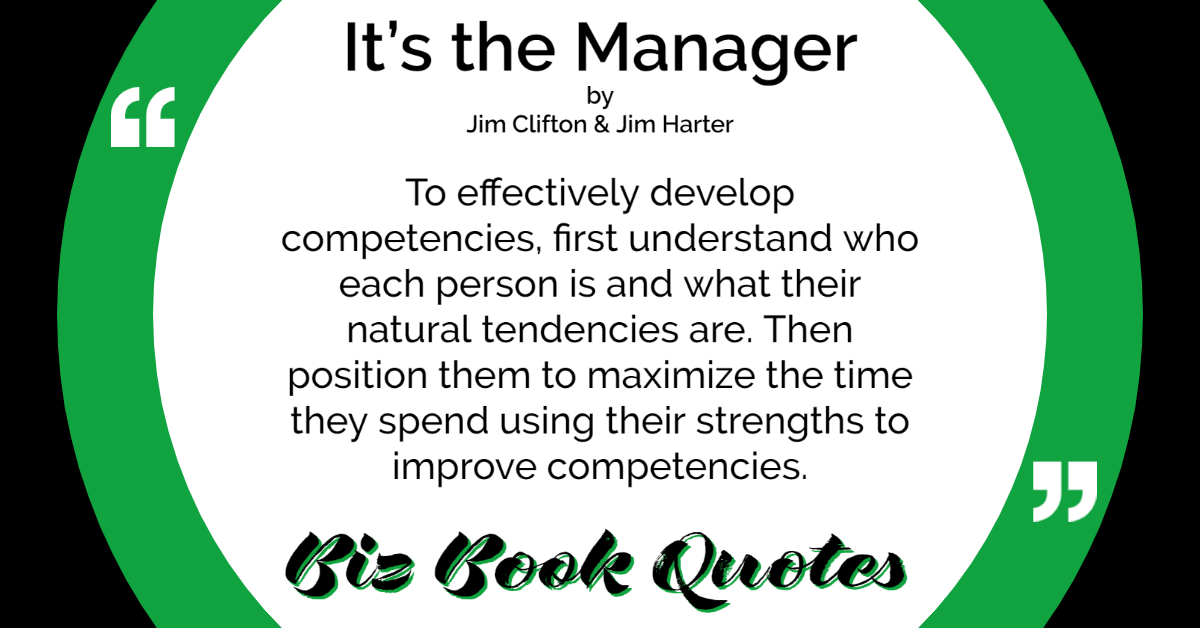
|
It’s the Manager:
To effectively develop competencies, first understand who each person is and what their natural tendencies are. Then position them to maximize the time they spend using their strengths to improve competencies.
|
62 |
|
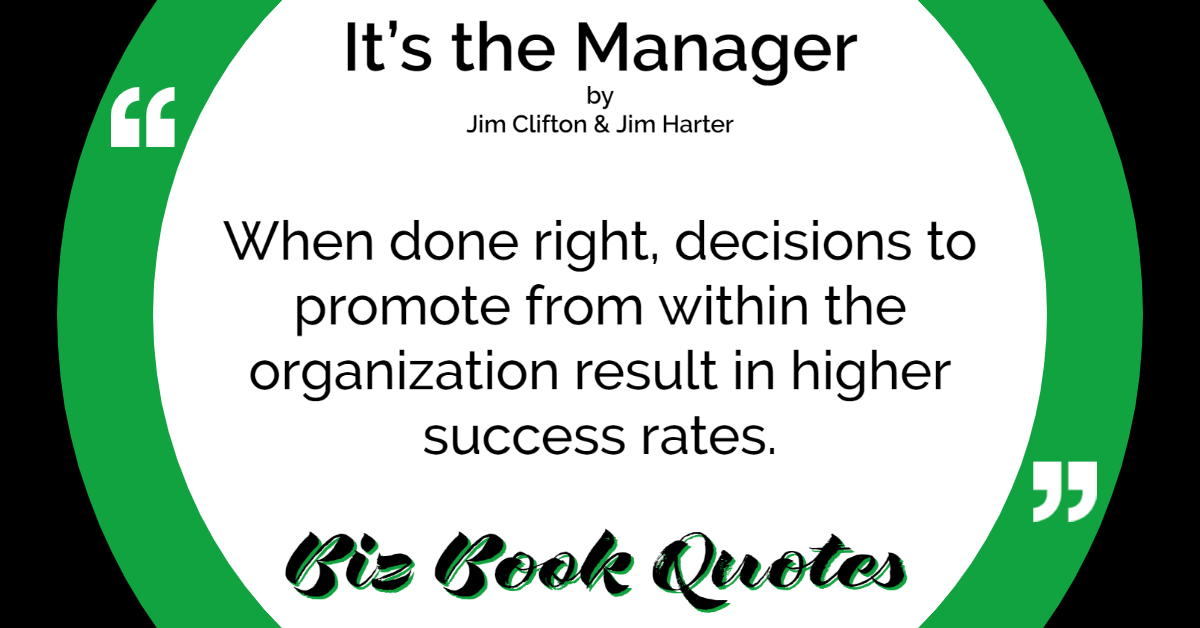
|
It’s the Manager:
When done right, decisions to promote from within the organization result in higher success rates.
|
67 |
|
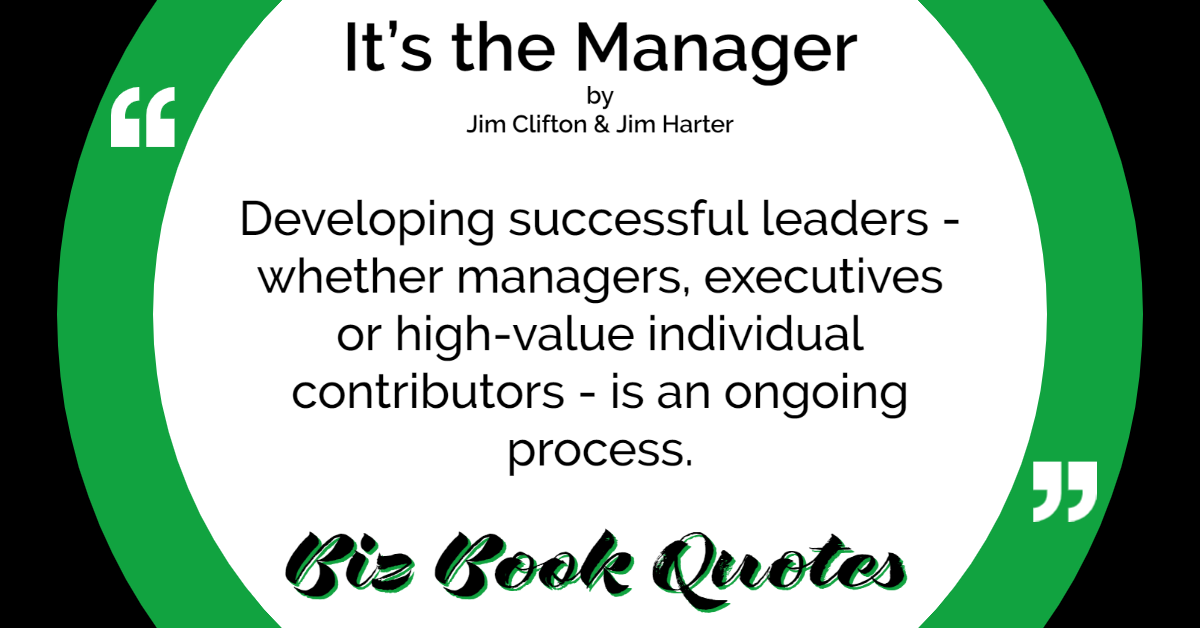
|
It’s the Manager:
Developing successful leaders – whether managers, executives or high-value individual contributors – is an ongoing process.
|
69 |
|

|
It’s the Manager:
Taking a purposeful approach to the employee exit process will get you the right analytics to make future decisions about your culture and create ambassadors who can enhance your employment brand.
|
71 |
|
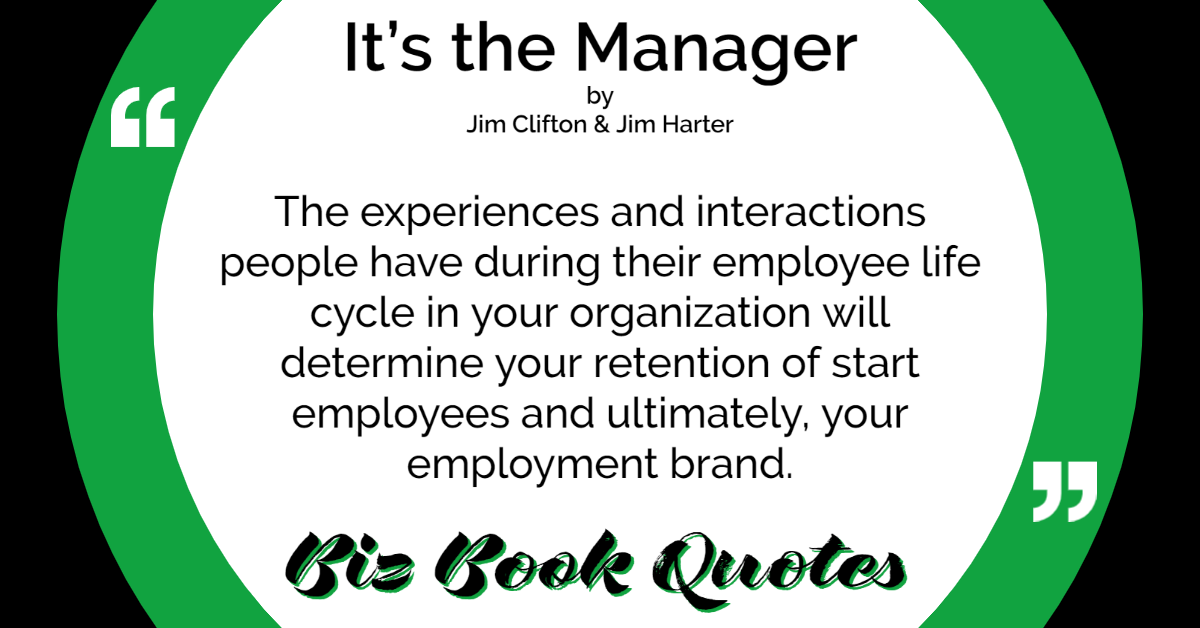
|
It’s the Manager:
The experiences and interactions people have during their employee life cycle in your organization will determine your retention of start employees and ultimately, your employment brand.
|
72 |
|
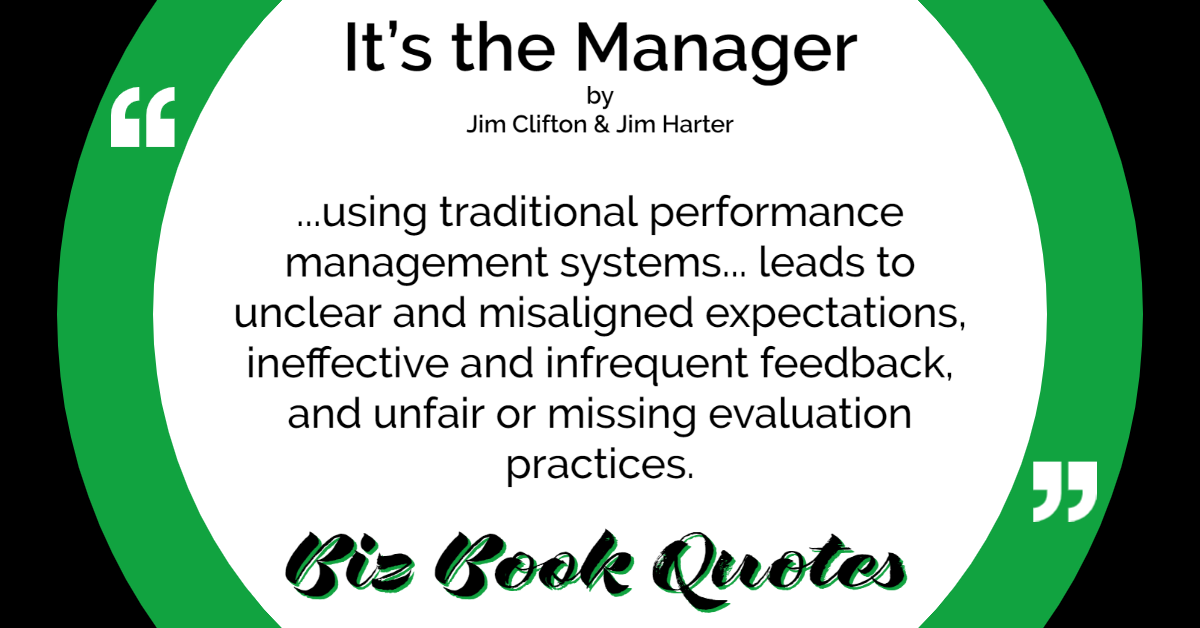
|
It’s the Manager:
…using traditional performance management systems… leads to unclear and misaligned expectations, ineffective and infrequent feedback, and unfair or missing evaluation practices.
|
78 |
|

|
It’s the Manager:
…studies find that continual coaching has a powerful impact on performance. And goal setting has a stronger positive effect… when it is accompanied by feedback on progress.
|
80 |
|

|
It’s the Manager:
…employees hate feeling ignored – it’s even worse than focusing on their weaknesses. Some attention, no matter what form, is better than no attention.
|
82 |
|
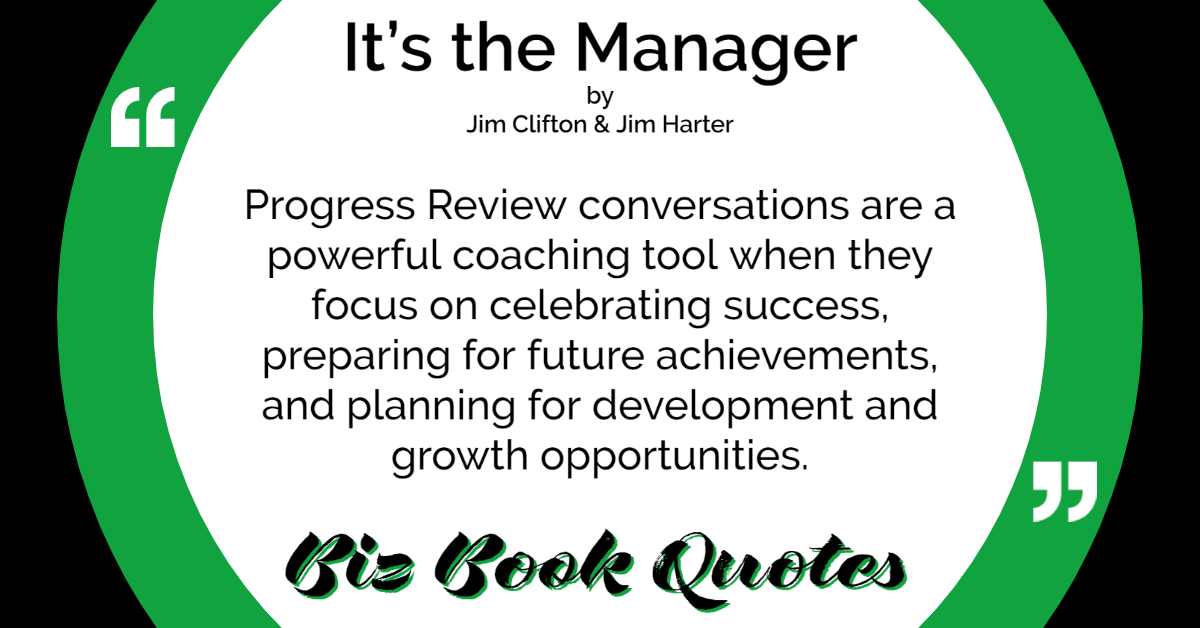
|
It’s the Manager:
Progress Review conversations are a powerful coaching tool when they focus on celebrating success, preparing for future achievements, and planning for development and growth opportunities.
|
84 |
